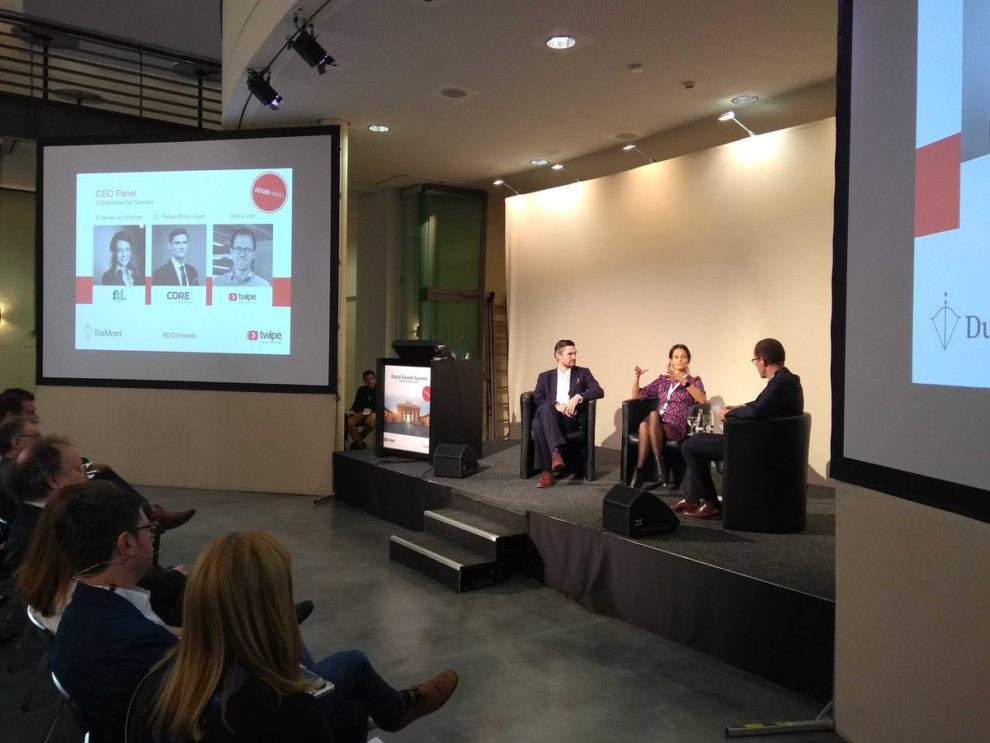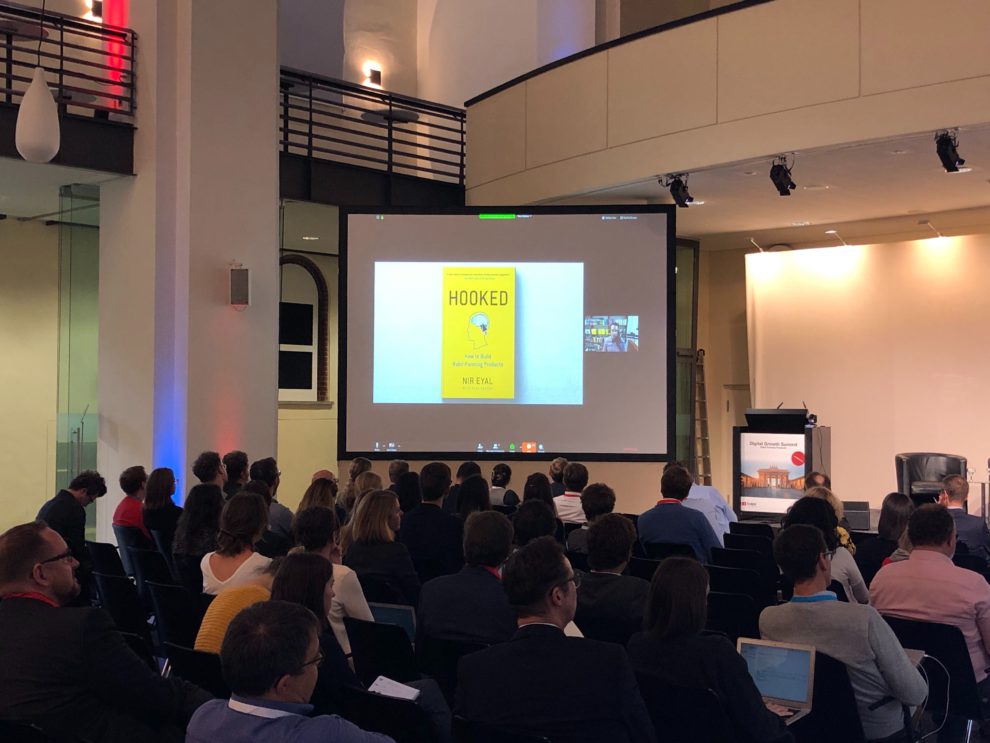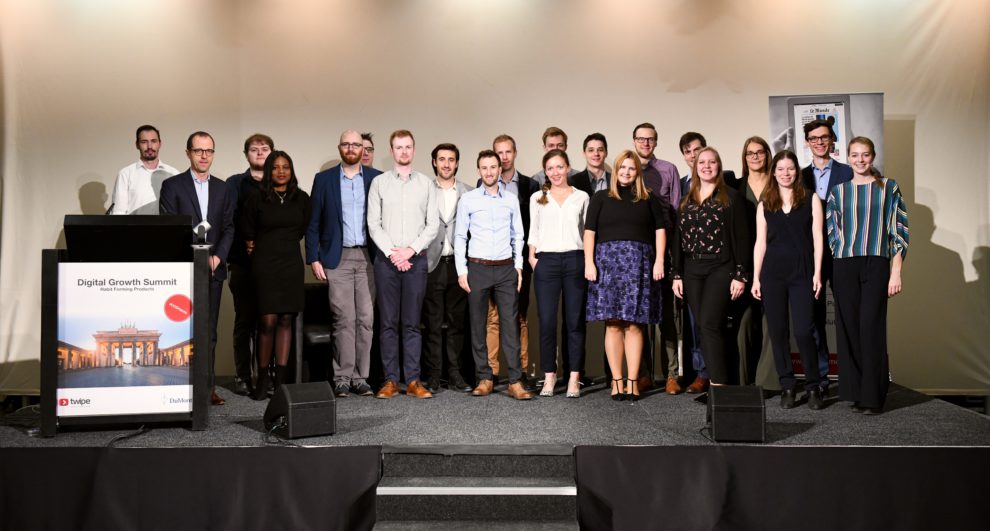For the third edition of our Digital Growth Summit, more than 150 news media innovators leaders gathered in Berlin to discuss habit forming news products. Joined by industry peers and academia, we learned what works (and what doesn’t) for creating news products that become part of your readers’ daily routines. We wrapped up the day with a keynote and “Ask Me Anything” from bestselling author Nir Eyal.
We could feel that in the room there was a consensus regarding a needed focus on the right habit-forming strategies to address the known challenges brought by tech giants, subscription fatigue or perceived product value. No one seems to have cracked the code yet, but we understood that it will require organisational change, a deeper understanding of readers, and continuous experimentation.

We first need to break some of our own bad habits
The topic of organisational transformations was key for many publishers starting down the path of habit formation. Before we can start designing for habit-development, news organisations need to first take a look at their own culture and make some changes. It’s important to get everyone aligned on the ultimate goal, such as increasing reader engagement. To achieve this, we heard from many publishers that they’ve adopted agile processes and focused more on a data-driven culture. This is still very much a work in progress though, with some publishers reporting a lag between their different teams. Often, the newsroom and the product teams have different cycles, speed and rituals, therefore it remains key to set priorities and organize short feedback cycles. The whole organisation has to commit to the transformation, and find the right balance with their digital evolution.
If you go too fast, you lose out. But if you don’t go at all, you lose as well.
Eugenie van Wiechen, FD Mediagroep, concerning the transition to digital
To facilitate this transformation, it will be crucial for publishers today to understand that their biggest competitors are the tech giants themselves. In the age of print, newspapers were an essential part of many people’s daily routines: always a coffee and a quick read before starting the day. Yet today, readers have many more options competing for their attention every day. What before used to be a single newspaper landing on your doorstep is now replaced by the ability to scroll through Facebook, check out Instagram and Twitter, or scanning the headlines on Reddit. Not only does this mean we are competing against the tech giants for attention, but their products are also shaping reader expectations regarding user experience, layout, and even pricing. Olivier Braet, Senior Researcher at Free University of Brussels, warned us that there is only a limited amount of subscription money that we’re all fighting for, and Eugenie Van Wiechen talked about a new pricing anchor point taking shape benchmarked to companies such as Netflix and Spotify.
It is not just us trying to get that time, trying to build those habits. Previously we had monopoly of access.
Nic Newman, Research Associate at the Reuters Institute

Build on readers’ already existing habits
The most effective way to build habit is to be where your readers already are every day. For example many people already have a habit to check their phones right away in the morning, so publishers are experimenting with such things as WhatsApp news briefings.
It is important to get into people’s life.
Mathias Douchet, Director of Product at The Telegraph
Remy Becher from The Economist presented how they have developed their audio products for their habit formation strategy. Audio has been quite successful for them, since listeners can fit the news into parts of their daily routines that don’t allow for reading, such as while driving or exercising. To truly create the habit however, audio content needs to be updated daily — so podcasts are best when they are daily instead of weekly.
Podcasts with a daily cadence best create a habit.
Remy Becher, VP of Product at The Economist
It’s clear that reader habits are largely shaped by their previous experiences. Nic Newman from the Reuters Institute explained that many younger subscribers have a relationship with a certain newspaper brand that was built from a very young age, since their parents would read the newspaper. This is referred to as an anchor brand. The environment we live in, our habitat, plays an important role in shaping reader categories and taste clusters as described by researcher Olivier Braet.
Tell me what car you have, I will tell you what you read.
Olivier Braet, Research Associate VUB
Experiment to find the right balance between predictability and surprise
When facing these challenges of high turnover and reduced digital growth, it is important to try all kinds of ideas to keep your users engaged and retain them as subscribers. Tor Marius Espedal of Schibsted advised publishers to not think too much, just jump in and try out new things. The key to success is to experiment with new features and formats and test different products such as a gamification of the news, short briefings or a new subscriber onboarding guide. Still, we have to be careful to not accidentally create bad reader habits, such as encouraging readers to only subscribe when there’s a discount, then cancel when the promotional period is over.
We won’t solve our challenges by implementing one or two or even ten new improvements, we have to test and experiment to actually see what fulfills the needs for our many different readers.
Tor Marius Espedal, Head of CRM at Schibsted
While experimenting, publishers need to mix the comfort of predictability and the serendipity of the unexpected. For example, while it’s important to have a predictable publishing schedule, often readers still want to be surprised with the content itself. This idea of a variable reward is key for habit formation, according to Nir Eyal’s “Hooked Model”. He stressed the importance of giving your readers a variable reward for their actions. Using the example of a slot machine, users start to crave the thrill of pulling the lever and seeing what they are rewarded with — we can see the same behavior when users pull down to refresh a news feed today. The unpredictability makes the reward much more exciting and will keep users come back every day for the surprise.

The final step of Nir Eyal’s famous Hook Model is the “Investment Phase”. Research shows that putting effort into a task adds value to the product itself. The more you add new friends on Facebook, or share more photos on Instagram, the more valuable you find the platform. Storing this value makes you more committed to the product. In the publishing industry, this could be readers archiving their favourite articles or setting up their own personalized feed. These features get readers hooked and encourages them to renew their subscriptions.
Putting users to work is critical in creating products people love. Habit forming products can appreciate in value – they gain value the more we interact with them.
Nir Eyal, author of Hooked
For everyone who was there, we hope you had a great day and learned a lot. From the whole Twipe team, a big thank you to the great speakers and participants who contributed to making the Summit such a success!

This article was written by Mary-Katharine Phillips, Media Innovation Analyst at Twipe from 2017 – 2021.
Other Blog Posts

Stay on top of the game
Join our community of industry leaders. Get insights, best practices, case studies, and access to our events.
"(Required)" indicates required fields

